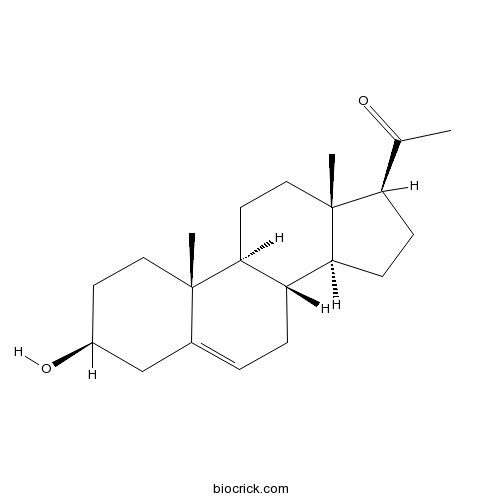Sinularia gyrosa
Sinularia gyrosa
1. The products in our compound library are selected from thousands of unique natural products; 2. It has the characteristics of diverse structure, diverse sources and wide coverage of activities; 3. Provide information on the activity of products from major journals, patents and research reports around the world, providing theoretical direction and research basis for further research and screening; 4. Free combination according to the type, source, target and disease of natural product; 5. The compound powder is placed in a covered tube and then discharged into a 10 x 10 cryostat; 6. Transport in ice pack or dry ice pack. Please store it at -20 °C as soon as possible after receiving the product, and use it as soon as possible after opening.
Natural products/compounds from Sinularia gyrosa
- Cat.No. Product Name CAS Number COA
-
BCN6255
Pregnenolone145-13-1
Instructions

Sinugyrosanolide A, an unprecedented C-4 norcembranoid, from the Formosan soft coral Sinularia gyrosa.[Pubmed: 24529868]
Chemical investigations on the acetone extract of the Formosan soft coral Sinularia gyrosa have obtained a novel C-4 norcembranoid possessing an unprecedented tricyclo[9.3.0.0(3,8)]tetradecane skeleton, namely sinugyrosanolide A. The NMR spectroscopic data of the novel norcembranoid were completely assigned by using a combination of 2D NMR experiments including (1)H-(1)H COSY, HSQC, HMBC, and NOESY. The cytotoxicities, anti-HCMV (human cytomegalovirus) endonuclease activities and antibacterial activities were evaluated in vitro. It showed moderate cytotoxicity against P-388 (mouse lymphocytic leukemia) cancer cell line with an EC50 of 11.8μM.
Antiviral and anti-inflammatory diterpenoids from the soft coral Sinularia gyrosa.[Pubmed: 20499851]
Chemical investigation of the soft coral Sinularia gyrosa led to the purification of three new diterpenoids, designated as gyrosanols A-C (1-3). The structures of 1-3 were elucidated through extensive spectroscopic analyses. Compounds 1 and 2 exhibited antiviral activity against HCMV with IC(50)'s of 2.6 and 3.7 microM, respectively. In addition, compounds 1 and 2 showed significant anti-inflammatory activity by reducing the levels of the COX-2 protein (19.6 + or - 3.9% and 29.1 + or - 9.6%, respectively) in RAW 264.7 macrophages.
Bioactive norditerpenoids from the soft coral Sinularia gyrosa.[Pubmed: 20430633]
Chemical investigations of the soft coral Sinularia gyrosa resulted in the isolation of six new norcembranolides, gyrosanolides A-F (1-6), a new norcembrane, gyrosanin A (7), and 11 known norditerpenoids 8-18. The structures of the isolated compounds were elucidated through extensive spectroscopic data and by comparison with reported data in the literature. Compounds 1-3, 7-9, 12, and 13 at concentration of 10microM did not inhibit the COX-2 protein expression, but significantly reduced the levels of the iNOS protein (55.2+/-14.6%, 18.6+/-6.7%, 10.6+/-4.6%, 66.9+/-5.2%, 10.2+/-5.1%, 17.4+/-7.2%, 47.2+/-11.9%, and 56.3+/-5.1%, respectively) by LPS stimulation. Compound 8 showed significant antiviral activity against HCMV (human cytomegalovirus) cells with an IC(50) of 1.9microg/mL.


